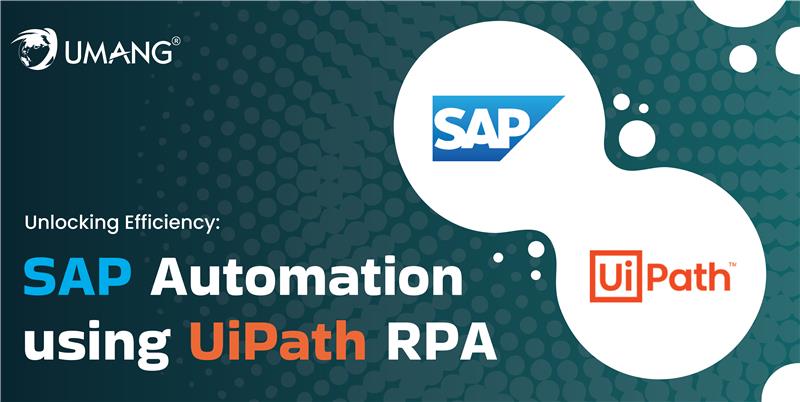Unlocking Efficiency: SAP Automation Using UiPath RPA
In the fast-paced world of enterprise resource planning (ERP), SAP remains the backbone of many global organizations. From finance and procurement to inventory and HR, SAP systems are central to business operations. However, the complexity and manual nature of many SAP processes often lead to inefficiencies, errors, and high operational costs.
Enter UiPath, a leading Robotic Process Automation (RPA) platform that is revolutionizing how businesses interact with SAP. By automating repetitive SAP tasks, UiPath enables organizations to streamline workflows, reduce human error, and dramatically boost productivity.

🤖 Why Automate SAP?
SAP systems are powerful—but often data-heavy and highly repetitive. Common pain points include:
- Manual data entry across modules
- Frequent report generation
- High risk of user input errors
- Time-consuming transactions and reconciliations
- Limited integration with non-SAP tools.
By introducing automation, companies can not only speed up these tasks but also improve accuracy, compliance, and employee satisfaction.
🛠️ How UiPath Works with SAP
UiPath integrates with SAP through both UI-based automation (mimicking human interactions) and API-based automation for more robust, behind-the-scenes operations.
Key benefits of using UiPath for SAP include:
- Certified SAP Connector: UiPath is SAP-certified, ensuring stable and secure automation.
- Recording & Automation: UiPath’s SAP recorder makes it easy to capture transactions and actions for quick bot creation.
- Seamless UI Interaction: Automates SAP GUI just like a human user—but faster and without fatigue.
- Integration Capabilities: Connects SAP with Excel, Outlook, databases, and other systems via drag-and-drop workflows.
🚀 Use Cases of SAP Automation with UiPath
Here are some real-world examples of how businesses use UiPath to automate SAP processes:
1. Invoice Processing
Automate the entry of vendor invoices into SAP from scanned PDFs or emails using UiPath with OCR and document understanding.
2. Master Data Management
Keep material, customer, and vendor data up to date across systems with automated validations and updates.
3. Order-to-Cash
Bots can create sales orders, check credit limits, and generate invoices, reducing cycle time and improving accuracy.
4. Procure-to-Pay
From purchase requisition to vendor payment, automate every step to eliminate delays and manual errors.
5. Payroll Processing
Fetch employee data, calculate payroll, and update SAP records—saving countless hours during salary cycles.
6. Reporting and Reconciliation
Generate scheduled reports, extract data, and reconcile it against external sources without manual effort.
🧠 Smart Features: AI + SAP
UiPath goes beyond simple automation by integrating AI capabilities:
- Document Understanding: Extract structured data from unstructured documents like invoices, POs, and contracts.
- AI Center: Deploy machine learning models to classify data, detect anomalies, or make decisions.
- Chatbots: Integrate with SAP for self-service queries related to HR, inventory, or finance.
These features enable intelligent automation—not just doing things faster, but doing them smarter.
📈 Business Impact
Organizations that implement SAP automation using UiPath often report:
- Up to 70% reduction in processing times
- Improved compliance and auditability
- Reduced operational costs
- Increased employee focus on high-value tasks
- Scalable operations during peak business periods
🏁 Getting Started
If you’re considering SAP automation, here’s a simple roadmap:
- Identify repetitive SAP processes with high volume or error rates.
- Use UiPath Process Mining or Task Mining to analyze workflows.
- Design and test bots using UiPath Studio or StudioX.
- Deploy with governance using UiPath Orchestrator.
- Monitor, refine, and scale automation across departments.
💬 Final Thoughts
SAP is vital—but often cumbersome. With UiPath RPA, businesses can supercharge their SAP usage, bringing agility, speed, and intelligence to core operations. It’s not just about saving time—it’s about building a more resilient and responsive enterprise.
As more companies move toward digital transformation, the marriage of SAP and UiPath stands out as a game-changer—turning SAP from a traditional ERP tool into a truly automated powerhouse.
